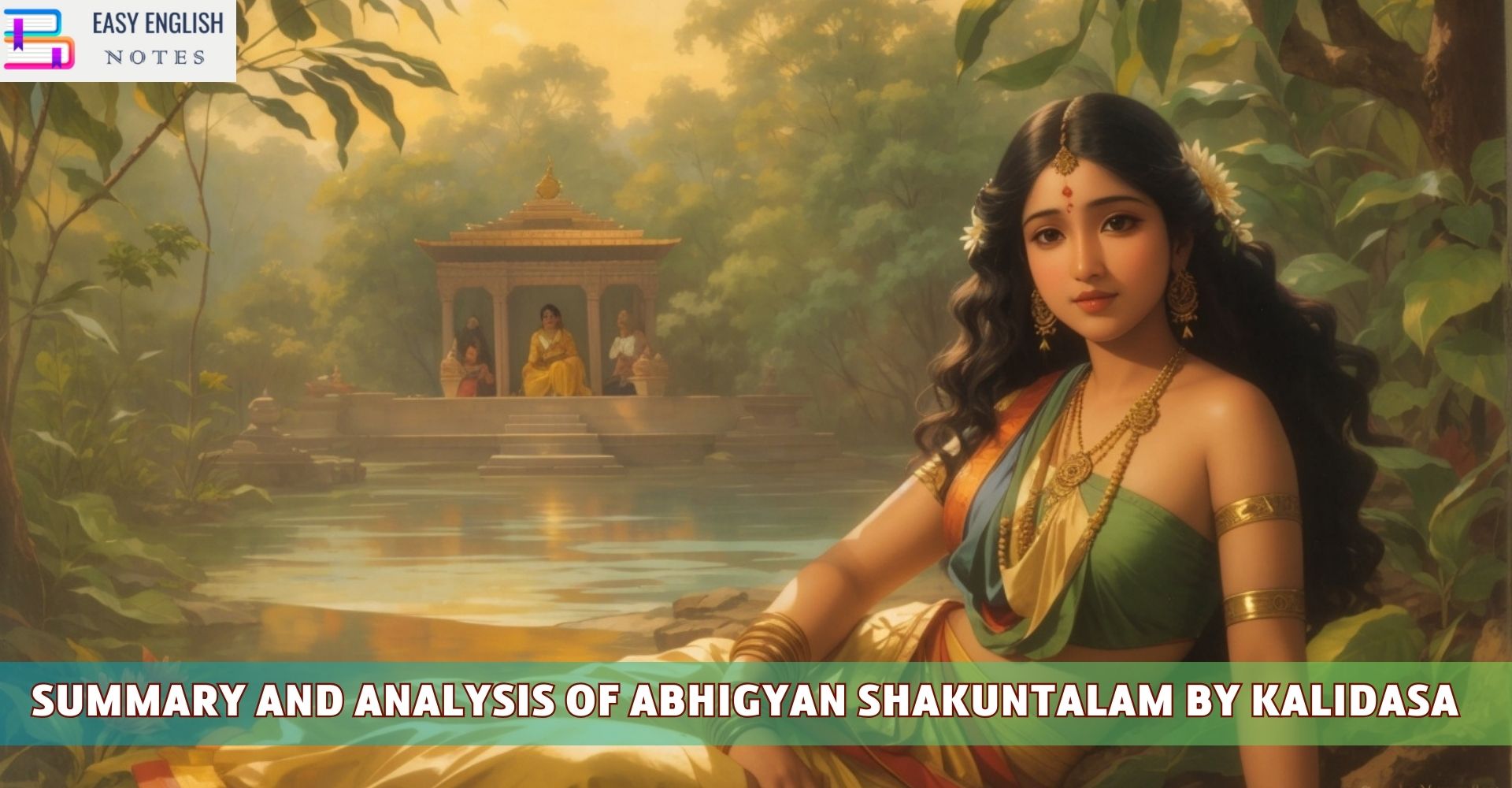“Abhigyan Shakuntalam,” a seminal work by the legendary Sanskrit playwright Kalidasa, stands as a timeless classic in Indian literature. This play gracefully intertwines elements of love, destiny, and fate. Abhigyan Shakuntalam” is a jewel of Sanskrit literature, blending romance, drama, and mysticism. It narrates the story of King Dushyanta and Shakuntala, a hermitage girl, whose love story transcends the trials of fate and memory.
Summary:
The story unfolds with King Dushyanta, while on a hunting expedition, encountering Shakuntala, the adopted daughter of sage Kanva, in an ashram (hermitage). Struck by her ethereal beauty and purity, Dushyanta falls deeply in love with Shakuntala. Their love blossoms, leading to a secret marriage, following the Gandharva ritual, a form of marriage by mutual consent with nature as their witness.
However, the narrative takes a twist when Shakuntala, lost in thoughts of Dushyanta, unintentionally offends the irritable sage Durvasa. The sage curses her, declaring that the person she is dreaming of will forget her. This curse, however, comes with a caveat – it can be reversed if she shows Dushyanta a token given to her by him. Tragically, Shakuntala loses this token, a ring, and consequently, Dushyanta has no recollection of her when she goes to his palace.
The play reaches its climax as the ring is found by a fisherman and reaches Dushyanta, which breaks the curse, triggering his memory. The play concludes with the lovers’ reunion, symbolizing the triumph of love and destiny over challenges and time.
“Abhigyan Shakuntalam” is not just a love story; it’s a rich tapestry of emotions, cultural values, and the belief in the inevitable force of destiny. Kalidasa’s poetic expression and profound understanding of human emotions make this play an enduring masterpiece.
Also Read :
- Compare Hamlet with Macbeth, Othello and other Tragedies
- “The Pardoner’s Tale” is the finest tale of Chaucer
- Prologue to Canterbury Tales – (Short Ques & Ans)
- Confessional Poetry – Definition & meaning
- Line By Line Explanation Of The Poem The Eve of St. Agnes
Analysis:
“Abhigyan Shakuntalam” by Kalidasa is not only a landmark in Sanskrit drama but also an enduring piece of world literature. Its significance lies in its intricate storytelling, profound themes, and the portrayal of human emotions. Here’s an analysis focusing on various aspects of the play:
Narrative Structure and Style:
Kalidasa’s narrative style in “Abhigyan Shakuntalam” is distinguished by its poetic elegance and the seamless integration of lyrical verses with prose. The play follows a classical Sanskrit dramatic structure, divided into acts, each marking a significant phase in the storyline. The use of metaphors and similes richly evokes the natural and emotional landscapes of the characters.
Character Development:
- King Dushyanta: He is portrayed as a noble but flawed character. His journey from passionate lover to a remorseful king showcases his inner conflict between royal duties and personal emotions.
- Shakuntala: Shakuntala is the embodiment of purity, innocence, and devotion. Her transformation from a naive maiden to a wronged woman who faces her trials with dignity is central to the narrative.
- Secondary Characters: The hermitage dwellers, the king’s court members, and mythical figures add layers to the story, each contributing to the unfolding of events and the development of main characters.
Themes and Motifs:
- Love and Destiny: The central theme is the power of love, interwoven with the concept of destiny. The play suggests that true love can transcend the barriers of memory and time, aligning with the forces of destiny.
- Nature as a Witness: Nature is not just a backdrop but a living, breathing entity in the play, acting as a witness and participant in the unfolding love story.
- Dharma (Duty) and Personal Desires: The conflict between dharma and personal desires is evident in Dushyanta’s character, reflecting the ancient Indian ethos where duty towards one’s role in society often supersedes personal happiness.
- The Play of Memory and Forgetfulness: Memory and forgetfulness are pivotal to the plot, symbolizing both the fragility and strength of human connections.
Cultural and Philosophical Underpinnings:
The play is steeped in Hindu philosophy and cultural beliefs. The concept of ‘Gandharva marriage’ reflects societal norms and practices of the time. The presence of sages, hermitages, and references to Indian mythology situate the play firmly within the Indian cultural and philosophical milieu.
Literary Devices and Symbolism:
Kalidasa’s use of literary devices like irony (Dushyanta forgetting Shakuntala) and symbolism (the lost ring) enriches the narrative. The ring serves as a symbol of love, memory, and identity, while the curse represents the unpredictable nature of life and relationships.
Influence and Legacy:
“Abhigyan Shakuntalam” has had a profound influence on Indian literature and theater. It has been translated into multiple languages, adapted into various art forms, and continues to be studied and celebrated for its artistic and cultural value.
Conclusion:
Kalidasa’s “Abhigyan Shakuntalam” is a masterpiece that transcends time and culture. It offers insights into human emotions and relationships, set against a backdrop of rich Indian traditions and philosophies. The play’s enduring popularity is a testament to its universal themes and the timeless appeal of its narrative and characters. In “Abhigyan Shakuntalam,” Kalidasa masterfully crafts a world where love is both the cause of anguish and the ultimate redeemer. The play is not just a romantic saga; it’s a philosophical exploration of life’s deeper truths, beautifully woven into a narrative that speaks to the heart. Its enduring appeal lies in its ability to connect with the fundamental human experience of love, loss, and redemption.
PLEASE HELP ME TO REACH 1000 SUBSCRIBER ON MY COOKING YT CHANNEL (CLICK HERE)











